Accounting from Incomplete Records (Part - 4) - Commerce PDF Download
Page No 23.60:
Question 37:
From the following particulars, ascertain the value of Opening Stock:-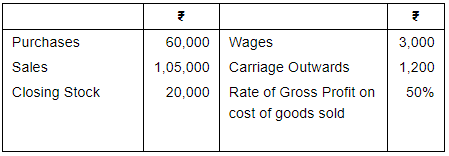
ANSWER:
Rate of Gross Profit (on cost) = 50%
Rate of Gross Profit (on sales) = 33.33%
Gross Profit = 33.33% of (1,05,000) = 35,000
Gross Profit = Net Sales – Cost of Goods Sold
35,000 = 1,05,000 – Cost of Goods Sold
Cost of Goods Sold = 1,05,000 – 35,000 = ₹ 70,000
Cost of Goods Sold = Opening Stock + Purchases + Direct Expenses – Closing Stock
70,000 = Opening Stock + 60,000 + 3,000 – 20,000
Opening Stock = 70,000 – 60,000 – 3,000 + 20,000 = ₹ 27,000
Page No 23.60:
Question 38:
Mr. Bhardwaj has kept incomplete records. He submits to you the following information: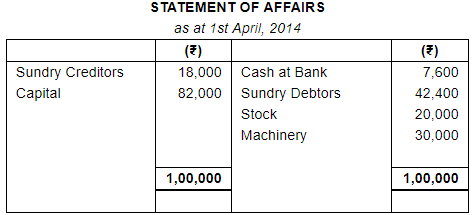
Bhardwaj banks all receipts and makes all payments only by means of cheques. Following is the analysis of his bank transactions: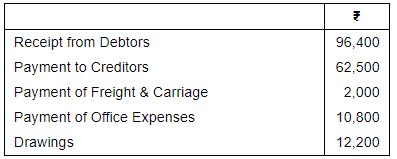
ANSWER:


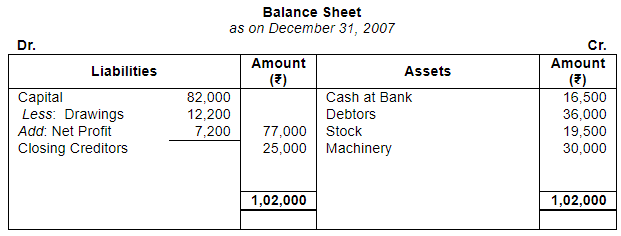
Working Notes:
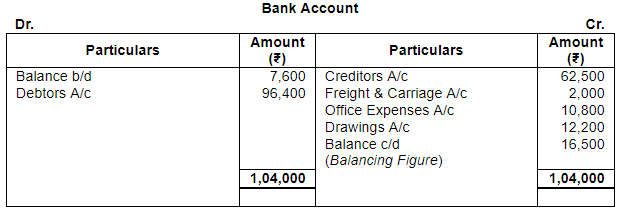


Rate of Gross Profit (on sales) = 20%
Gross Profit = 20% of 90,000 = 18,000
Gross Profit = Net Sales – Cost of Goods Sold
18,000 = 90,000 – Cost of Goods Sold
Cost of Goods Sold = 90,000 – 18,000 = ₹ 72,000
Cost of Goods Sold = Opening Stock + Purchases + Direct Expenses – Closing Stock
72,000 = 20,000 + 69,500 + 2,000 – Closing Stock
Closing Stock = 20,000 + 69,500 + 2,000 – 72,000 = ₹ 19,500
Page No 23.61:
Question 39:
From the following records kept on single entry basis, prepare final accounts assuming that ratio of gross profit to sales is 25%: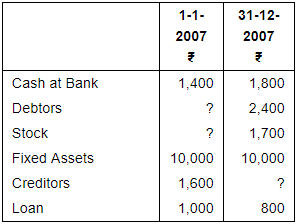
Transactions during the year 2007: 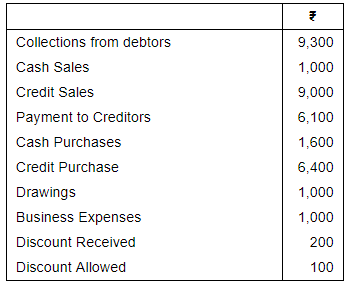
ANSWER:

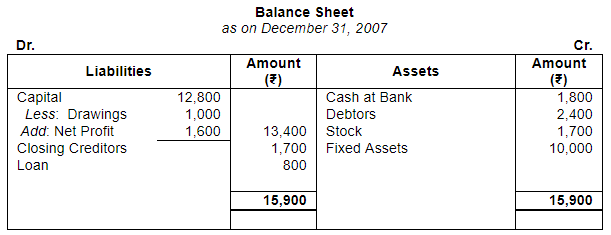
Working Notes: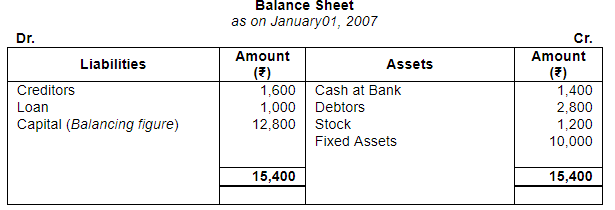


Rate of Gross Profit (on sales) = 25%
Gross Profit = 25% of (1,000 + 9,000) = 2,500
Gross Profit = Net Sales – Cost of Goods Sold
2,500 = 10,000 – Cost of Goods Sold
Cost of Goods Sold = 10,000 – 2,500 = ₹ 7,500
Cost of Goods Sold = Opening Stock + Purchases + Direct Expenses – Closing Stock
7,500 = Opening Stock + (1,600 +6,400) + 0 – 1,700
Opening Stock = 7,500 – 8,000 + 1,700 = ₹ 1,200
Page No 23.62:
Question 40:
Sonam keeps his books on single entry and provides you with the following information:
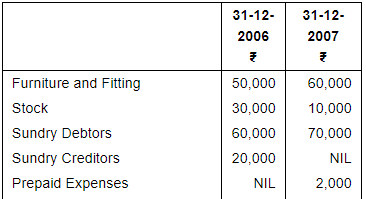
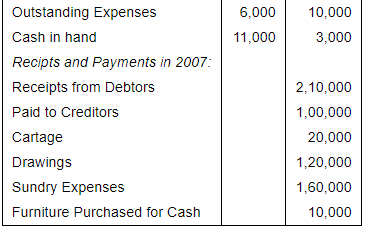
ANSWER:


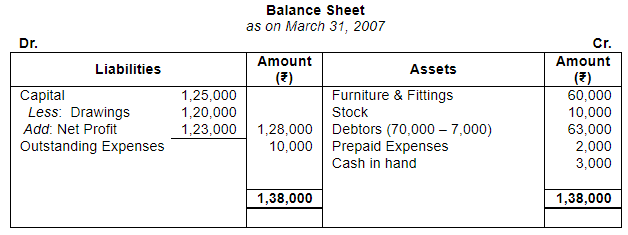
Working Notes:
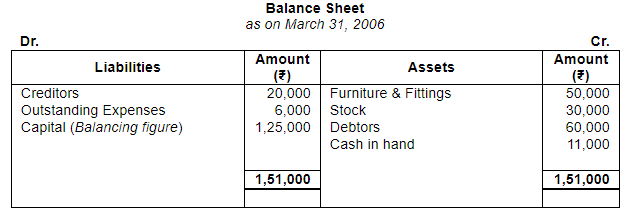
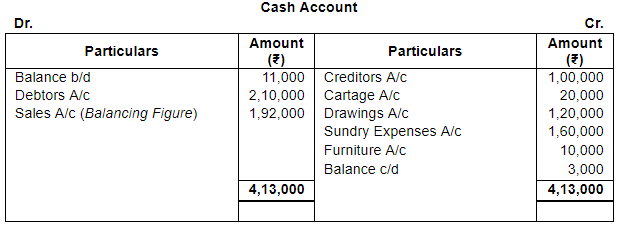


Page No 23.62:
Question 41:
Ascertain the value of Closing Stock from the following: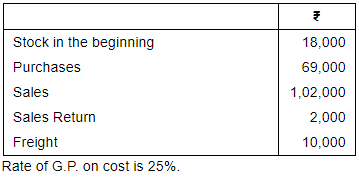
ANSWER:
Rate of Gross Profit (on cost) = 25%
Rate of Gross Profit (on sales) = 20%
Gross Profit = 20% of 1,00,000 = 20,000
Gross Profit = Net Sales – Cost of Goods Sold
20,000 = 1,00,000 – Cost of Goods Sold
Cost of Goods Sold = 1,00,000 – 20,000 = ₹ 80,000
Cost of Goods Sold = Opening Stock + Purchases + Direct Expenses – Closing Stock
80,000 = 18,000 + 69,000 + 10,000 – Closing Stock
Closing Stock = 18,000 + 69,000 + 10,000 – 80,000 = ₹ 17,000
FAQs on Accounting from Incomplete Records (Part - 4) - Commerce
| 1. What is accounting from incomplete records? |  |
| 2. What are the challenges of accounting from incomplete records? |  |
| 3. How can accounting from incomplete records be done? |  |
| 4. What are the limitations of accounting from incomplete records? |  |
| 5. How can accounting from incomplete records affect business decisions? |  |














